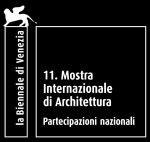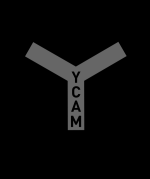The Future of Corpora
Posted by PeterFuchs on December 8th, 2008, filed in development diary
The Corpora website editor Peter Fuchs was discussing the future of the Corpora Project with the members of the doubleNegatives Architecture. In which direction will Corpora evolve – shall it become an ultimate tool of automated construction cyborg instructing zillions of nano-assemblers, or should it become a supplementary tool or plugin for to some CAD programs to design more ergonomic architectural bodies?
Read the interview here:
Corpora Blog:In a 5-10 years time period, what would be your ideal implementation of Corpora system?
Ákos Maróy: My foremost interest is to enhance the algorithm further that it creates useful architectural structures, basically going town to the path to be able to create almost useful architectural plan with Corpora. By useful I mean a clear utilitarian approach, as you want to design a building, you can use Corpora algorithm in a way to do most of the design work, and later apply any human intervention into the result, of course like re-check the structure statically de some anaizes, or do any further adjustments. You could say: “I need an office building with twelve rooms, and Corpora generate several results form you can choose. And of course, it might be useful to add Corpora to a commercial softwares like ArchiCAD.
Corpora Blog: You imagine Corpora to be a design system, which one can use as a tool to generate static a scheme for a building, a final product or something, which does not stop to rearticulating, evolving the building even after the construction is finished, and the structure is already habited.
Ákos Maróy: I do not see in a ten to fifteen years period that anyone could invent a architectural construct which can change its shape, but of course, I am not an architect, and do not keep an eye on the latest development on this field. So I do not see the option for an architectural solution which changes automatically.
You could opt for manual changes – building design to be easily reconfigured manually along some aspects, but at the moment I can’t see any materials which are moveable or stretchable for example.
But it would be nice.
And also I might add, Corpora might be used to readjust plans, which the architect already designed: you could readjust the plans in any stage of the planning. You could use this algorithm to readjust the space, – for example, it might be visible that too many people are crowded on a corridor, so that should be readjusted, but of course you have to go there manually and readjust the building – so in this case Corpora becomes a slow feedback mechanism.
Max Rheiner: Honestly, I have to say, I do not rely as much to the architectural pathway. I think, first of all, it could lead to a pathway you start to design stuff in general. Maybe we might only create another way to be creative, to design things. Corpora in this case might be a new pathway, unlike in the process, in which you just push a button, and get the results, Corpora is more back-reflecting to the user, and in this sense it might also change the way how you approach things. You don’t have to collect all the date to start a process, you just have to start the process, and it will work with the date live – so you can stop, restart, intervene any time and the data will be generated with different results.
And the other think, which Ákos mentioned – but I don’t care if it is possible or not – I would really like to see cellular behavior of nano-assemblers, if this would be ever possible.
I can also imagine Corpora to be a ghost, or an astral body for an object, which was created in architectural sense, and could be maybe observed with augmented reality, if this technology becomes more widespread. It could be also possible that an object – like an house, which was created with Corpora – has a second manifestation, and maybe has an effect on the house, just as a top layer, over the reality.
Sota Ichikawa: Actually, I can imagine a building built by nano-assemblers changing very-very slowly, like a tree, but in the same time not intervening into the actions of its habitants with the help of Corpora. We can also use the data of Corpora as blueprints of other designs, like in the case of the Algorithmic Wall, which was designed on the blueprints provided by the Corpora.
Kaoru Kobata:
In Yamaguchi, there was a children workshop, in which there were given spaghetti to make forms and buildings, and of course, they were addicted to it – but of course, those structures made of spaghetti were not architecturally stable. We also created a Corpora structure at the Yamaguci center from aluminum, a heavy structure which was not too stable, or at least we were reluctant to announce it safe before an engineer would conforms its stability, even though Corpora system is designed to be perfectly stable, unlike the ad-hoc spaghetti structures.
So, we have asked a structural engineer to calculate the stability, and it turned out to be perfectly stable. So, at the moment it is perfectly stable, and now it is our duty to extend not only the notion of design, but give new functions to Corpora.
Sota Ichikawa:
Also, it is a big question if we decide to make design, or pre-design at all: Corpora just make structure, and people find the propose later, just like an empty cave, where people go in, and try to find a way to use it.
Kaoru Kobata:
Corpora would be useful for a country for example which is dependent on the climate, for example has a dry season a wet season. Maybe Corpora can create a building which can correspond to the changing of these seasons by adjusting the angle on the windows regarding to the season, changing walls according to humidity patterns etc.








Leave a Reply
You must be logged in to post a comment.